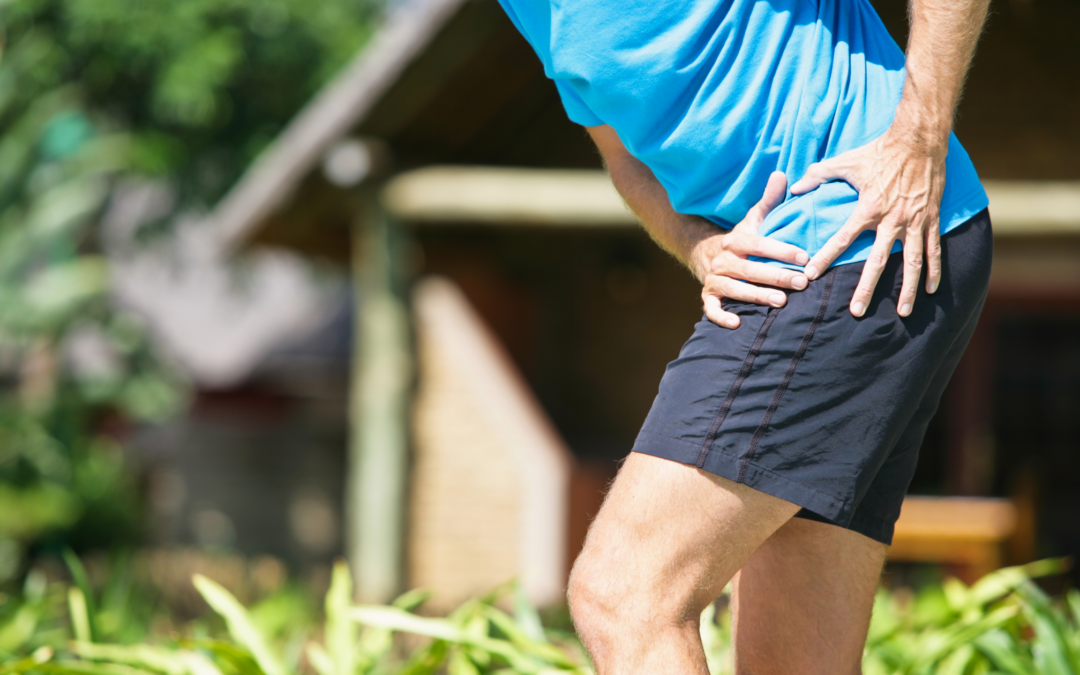
Dec 30, 2022
Chronic pain is pain that lasts for more than 12 weeks. It can be constant pain or pain that comes and goes. This can cause physical discomfort as well as mental health issues. You can experience chronic pain due to:
- Arthritis
- Sports injuries
- Chronic back pain
- Accidents
- Surgeries
Conservative Management of Chronic Pain
There are many options for managing chronic pain, including lifestyle changes and medications, like NSAIDs, over-the-counter pain medications, or opioids. These medicines have many shortcomings, but we’ll highlight the most profound:
- They don’t work for some patients.
- They can have side effects and can be toxic to patients with other underlying conditions.
- Sometimes they have reduced effectiveness, necessitating prescriptions of stronger medications.
However, there are other alternatives that you can use to manage pain, and they include:
Cold and Heat Therapies
Cold and heat are practices that many people use to manage chronic pain. The trick to using cold and heat therapy is knowing when to use them.
Cold therapy
Cold therapy reduces blood flow to the injured area, which slows down swelling and inflammation. In addition, you can apply cold compresses for joint and tendon pain.
Heat therapy
It is more useful when dealing with muscle pain. It eases the pain by increasing blood flow to the area and relaxing the muscle. Heat also reduces lactic acid accumulation, which could increase pain.
Exercise
Exercise relieves chronic pain and can improve strength, mobility, and flexibility over time. When you exercise, endorphins are released which act as natural pain killers. Therefore, it’s essential to find a workout that does not worsen your pain. Chronic pain can affect the quality of life, which can be improved by exercising.
Physical therapy
It is a pain management practice that involves strengthening and stretching exercises, massage, and other modalities, to manage chronic pain and other conditions. Physical therapists will teach you a proper comprehensive home exercise program.
Massage
It is a practice that involves soft tissue manipulation to relax muscles and reduce inflammation.
Shockwave therapy
This device uses sound waves to promote tissue healing. This can be use for muscles, tendons, and joints injuries.
Pain management continues to evolve. Pain management doctors use innovative devices and procedures that can wean their patients off medications. These techniques and devices have been used to successfully treat conditions that were previously difficult to treat.
Get Alternative Pain Treatment From SDOMG
Visit our website to learn more about alternative ways to manage chronic pain. We have a team of qualified certified pain management doctors who will give you quality, non-surgical treatment options to relieve your pain. Fill out this form to request an appointment.

Nov 5, 2022
Older adults are more likely to suffer from pain. Studies reveal that approximately 92% live with at least one chronic condition. As a result, they underreport pain as they see it as part of aging.
While we can associate some uncomfortable sensations in the body with age, it reaches a point when you must seek professional help.
So, when should you speak to your doctor about your pain? Find out more below!
What Types of Pain do Adults Experience?
Various factors can cause pain in older adults. For instance, you’re more likely to suffer from several conditions simultaneously as you age.
Although it can be difficult and often require medical diagnosis, understanding the cause of your pain is essential. Sometimes, identifying the type of pain you’re suffering from helps you know whether you need to see a doctor or not.
Here are some types of pain older adults are likely to experience:
- Back pain due to arthritis or degenerative changes (occurs mostly in the low back and neck)
- Chronic joint pain (such as knee or hip joint pain)
- Musculoskeletal pain
- Peripheral neuropathic pain (typically due to diabetes or postherpetic neuralgia)
When To Talk to Your Doctor About Pain
While most older adults become accustomed to pain, it’s crucial to speak to a doctor once it reaches a particular stage. So, when should you seek professional help?
If You Experience Severe or Intense Pain
You should speak to a doctor if you experience severe pain that causes intense suffering. For instance, if you’re suffering from back pain, talk to a doctor if:
- You experience discomfort, numbness, or weakness
- Pain appears suddenly
- Pain creeps on gradually
- The pain results from a severe blow or a fall
- You have a high fever
If Your Pain Worsens
Sometimes you may experience pain that goes away after a short period or when you use over-the-counter medication. However, you should talk to your doctor if the pain lasts longer than 72 hours.
If Your Pain Disrupts Daily Life
Some older adults tolerate pain because they believe it is part of aging. But sometimes, the pain can interfere with their daily lives (or even their caregivers). For example, it can affect your mood, sleep, work, or self-care.
As a result, patients tend to suffer from anxiety and emotional distress. Therefore, you should speak to your doctor if pain disrupts your daily life.
If You Depend on Over-the-Counter Medications
Over-the-counter medications can provide short-term pain relief to older adults. However, they shouldn’t be use on a daily basis.
Over-the-counter pain reliever use comes with certain risks, including potential misuse or abuse, incorrect self-diagnosis, and increased drug-drug interaction risk. If you can’t go a day without pain relievers, speak to a doctor.
Key Takeaway
Older adults experience different types of pain resulting from various conditions. However, you should speak to your doctor when the pain worsens or disrupts your daily life. If you’re experiencing pain, contact the experts at SDOMG by filling out the form below.

Oct 6, 2022
If you are among the millions of Americans suffering from low back pain, you have probably tried adjusting your lifestyle and other remedies to ease the symptoms. Although it helps upgrade to a high-tech mattress or an ergonomic office chair, the results are not always convincing.
One research by the Association of Academic Physiatrists (AAP) in February 2021 found that how people eat will affect their low back pain. In this post, we discuss the link between Anti-Inflammatory Diet Help and Chronic Pain.
What Does An Anti-Inflammatory Diet Do?
The human immune system activates whenever the body recognizes a foreign object like an invading microbe, chemical, or plant pollen. The process triggers inflammation processes directed at the most threatening invaders.
Inflammation may sometimes persist even when a non-significant foreign invader threatens the body. In this case, inflammation becomes an enemy. Most diseases that plague the body, like heart disease, cancer, arthritis, diabetes, and depression, have roots linked to chronic inflammation.
Foods That Cause Inflammation
Avoid or limit the following foods as much as possible:
- French fries and other fried foods
- Soda and any sweetened beverage
- Margarine, lard, and shortening
- Refined carbohydrates like white bread and pastries
Health Risks of Inflammatory Foods
Unsurprisingly, the same foods that cause inflammation are classified as bad for health. Unhealthy foods will also contribute to weight gain, another risk factor for inflammation. Avoid food components and ingredients that may cause inflammation and increase calorie intake.
Anti-Inflammatory Foods
An anti-inflammatory diet includes food like:
- Olive oil
- Tomatoes
- Green leafy vegetables like collards, kale, and spinach
- Fatty fish
- Nuts
- Fruits like cherries, strawberries, blueberries, and oranges
Benefits of Anti-Inflammatory Foods
Nuts can reduce inflammation and lower the risk of diabetes and cardiovascular disease.
Fruits and vegetables like apples, blueberries, and leafy greens have high natural antioxidants and polyphenols compounds. They may be effective in alleviating chronic pain and helping you live well.
Anti-Inflammatory Diet
Reducing levels of inflammation requires you to aim for an overall healthy diet. Your daily eating plan should follow anti-inflammatory eating tenets by eliminating unhealthy foods. The typical anti-inflammatory diet consists of vegetables, fruits, whole grains, nuts, fish, and healthy oils.
In addition to lowering body inflammation, an anti-inflammatory diet will help you with overall physical and emotional health. Most of these foods effectively boost moods and the overall quality of life.
Reliable Pain Management solutions at SDOMG
Pain can adversely affect your life in a short time. At SDOMG, we offer interventional pain procedures to relieve pain and improve your quality of life. Contact us today to request a consultation with our administrative team. Fill out the form below to get started.

May 13, 2022
Chronic pain is, in many ways, tied to mental health and your mood. Many individuals who live with chronic pain experience some type of negative emotion, such as anger or frustration, because of the pain they are experiencing on a daily basis. If you are living with chronic pain, it is important to understand that depression and anxiety are commonly associated to this type of condition. In fact, research has found that having both chronic pain and mental health issues can have a profound effect on the overall quality of life.
Exercise has a great impact on your mood. It is thought that being physically active could be as effective as anti-depressants in mild cases of depression. It’s important to keep up, or start, an exercise routine to keep your spirits lifted.
Exercise is very beneficial to your physical, mental, and emotional health. It positively affects:
- Your energy levels
- The quality of sleep you get each night
- Decreases anxiety
- Chronic pain conditions worsened by depression and stress
- Your self-esteem, confidence, and body-positivity
- Avoid less-than-ideal approaches to boosting your mood like indulging in sweets or even alcohol.
How exercising outdoors can boost your mood & help Reduce Pain
Exercising outside gives you an added boost. People who exercise outdoors have reported greater vitality, excitement, and less stress after walking in nature.
If you are constantly inside, it’s very tempting to relax on the couch and turn on the TV or scroll through your social media accounts on your phone. Exercising in a controlled environment – like a gym – may help, but getting outside is even better.
Gardening, mowing the lawn, and playing with your kids are activities that get you moving and away from the screens, while increasing your energy levels. This is especially great for your kids. Children are twice as active when they spend time outside as opposed to staying indoors.
Sunlight triggers hormones in your brain and increases the release of serotonin. Serotonin is accredited with boosting your mood and helping you feel calm and collected.
Sunlight can also stabilize our circadian rhythms which helps us get a better nights’ sleep. Light can decrease depression and even increase focus and performance.
Vitamin D helps us fight disease. We can get our daily amount just by spending time outside. It can help protect us from a variety of conditions like osteoporosis, heart attacks, and even cancer. Your body can make Vitamin D if you get outside for 10-15 minutes a day.
This idea of exercising outside is called “Green Exercise.” Researchers in Great Britain have found that even just five minutes of exercise outside can be the mood-lifter you need.
Another added benefit of getting outside is exposure to plants. Plants help improve your immune system and the airborne chemicals from plants help shield us from bacteria that cause viruses.
Contact the team at SDOMG to start reducing your pain naturally, to help boost your mood and manage chronic pain.

May 6, 2022
Chronic hip pain can impair daily activities while affecting the patient’s quality of life. It can result in mild or severe physical discomfort around the hip area. The prevalence of hip pain increases with age. Chronic hip pain occurs due to an injury or a pre-existing condition like arthritis.
Symptoms of chronic hip pain in adults include soreness, tenderness, and decreased walking tolerance.
Conditions that cause chronic hip pain
Below are some of the conditions that can cause chronic hip pain:
1. Arthritis
Arthritis is a common cause of chronic long-term hip pain in adults. This condition results in stiff and tender joints, pain, and difficulty walking. Arthritis causes inflammation of the hip joint and the breakdown of the cartilage that covers the hip bones. Various types of arthritis that cause hip pain include:
- Osteoarthritis: occurs due to age-related wearing down of the joints’ cartilage. This results in stiffness, swelling, and pain in the hip.
- Rheumatoid arthritis: an autoimmune disorder in which your body attacks the protective lining around the joint, causing fluid build-up. Rheumatoid arthritis destroys joint cartilage and bone, causing chronic symptoms.
- Infectious arthritis: caused by a joint infection that destroys the cartilage.
2. Trochanteric Bursitis
Trochanteric bursitis occurs due to the inflammation of the bursa (a liquid-filled sack close to the hip joint). Joint overuse, hip injury, and posture problems are the common causes of trochanteric bursitis. Repetitive activities can irritate or overwork the hip joint causing inflammation of the bursa.
Although people of all ages can suffer from trochanteric bursitis, the condition is prevalent in middle-aged and older people.
3. Labral Tears
The labrum is the cartilage ring that keeps the thighbone ball in place. Labral tears are common in athletes and ballerinas and cause chronic hip limiting movement.
When you have labral tears, you feel like your hip is locking, clicking, or catching. Usually, pain from labral tears doesn’t go away.
4. Tendinitis/Tendinopathy
Inflammation or degeneration of the tendon are common in older adults and can cause chronic hip pain. Those suffering from tendon injury experience pain, especially when moving the affected hip, mild swelling, and tenderness.
Some causes of tendinitis or tendinopathy include repetitive motions, awkward positions, forceful exertions, and engaging in sports activities.
5. Hip Fracture
Hip fractures are cracks and breaks in the femur – the thigh bone close to the hip joint. An injury or a fall to the side of the hip may cause a hip fracture. Sometimes, hip fractures occur due to health conditions like osteoporosis or cancer that weaken the bones.
Older adults are more likely to get hip fractures, resulting in chronic hip pain. Hip fractures result in sudden and severe hip pain, often requiring immediate medical attention. In most cases, patients require surgery to correct hip fractures and alleviate chronic hip pain.
6. Bone Cancer
Bone cancers occur due to the abnormal growth of bone cells in your body. Chronic hip pain is one of the major symptoms of bone cancer in the hip. Some patients experience a mass or swelling in the hip.
Radiation exposure and hereditary factors have been linked to bone cancer that causes chronic hip pain.
Conclusion
Chronic hip pain is a condition mainly affecting older adults. This condition may hinder your daily activities and decrease your quality of life. Some conditions behind chronic hip pain include hip osteoarthritis, bursitis, and tendinopathy; most of these injuries respond well to regenerative treatments. If you experience any signs of chronic hip pain, seek immediate medical assistance. You can book an appointment with us by filling out this form.

Mar 18, 2022
Chronic back pain is common. So common that many of us just grin and bear it. We write it off as old age or bad posture.
Lower back pain reveals itself in many ways. It can be a deep, dull ache in your lower back. Or it can feel like tightness and spasms in and around that area. It can also be a stinging pain or accompanied by numbness or tingling in your legs or feet. No matter how it feels for you, lower back pain hurts.
7 Facts About Chronic Back Pain
1) There are several causes…
There are several causes of back pain. Some are minor and temporary, but others show a more serious, long-term problem. Causes can include:
- Muscle and ligament strain
- Bulging disks
- Arthritis
- Osteoporosis
- Sacroiliac joint inflammation
- Infection
- Tumors
If you’re unsure of the cause of your back pain, it’s important to find the right diagnosis. This will let you and your care team know which treatment will work best for you.
2) … and a lot of risk factors
While many of us can, and will, develop lower back pain, there are some risk factors we can avoid to lessen the likelihood or severity of the disorder. These risk factors include:
- Lifting objects incorrectly can cause strain on your lower back
- Lack of exercise weakens the muscles in your abdomen and back
- Being overweight adds extra stress to your back
- Mental health issues like depression and anxiety are linked to a higher risk for lower back pain
- Smoking can decrease blood flow to the spine as well as increase coughing, which strains the lower back
3) You can avoid little triggers
We can make several slight changes to ease the strain on our lower backs. They may seem like minor changes, but their benefits add up.
- Use a chair with good lower back support
- Arrange your monitor, keyboard, and other office equipment directly in front of you so you’re not twisting or sitting at an angle
- Take a 20 second break to stand up and stretch every 10 minutes to loosen up your joints and muscles
- Avoid tight clothing such as jeans that are too tight which can get in the way of moving, sitting, and bending normally
- Ditch those high heels for a heel that’s an inch or less. This keeps your center of gravity where it should be and avoids your body from compensating
4) You’re not alone
The Mayo Clinic reports that within the past three months, 1 out of 4 adults have reported experiencing back pain. More than that, over 80% of us will experience lower back pain in our lives. It’s also the second most common reason people have for visiting their doctor.
That’s a lot of people struggling with pain. Suffering from lower back pain can feel isolating, so it’s worth remembering that you’re not alone. Reach out to your doctor or look for support groups in your area to find that bit of extra support from those who understand your pain.
5) Be careful of opioids
It’s all too easy to rely on medication to treat lower back pain. However, pain relief pills, especially opioids, only treat the symptom and not the cause. Opioids include oxycodone, codeine, hydrocodone, and morphine. Using and abusing opioids often leads to addiction problems and sometimes even fatal overdoses.
If you find yourself struggling to manage your opioid medications or feel that you depend on them, reach out to your doctor or other health care professional for more information and advice.
6) There are a range of treatments available
There are several treatment options available besides medications which include:
- Physical therapy and conditioning exercise programs
- Weight loss
- Proper footwear
- Epidural Steroid Injections
- Facet Joint Injections
- Sacroiliac joint Injections
- Trigger Point Injections
- Platelet Rich Plasma Therapy (PRP) injections
- Prolotherapy injections
7) SDOMG can help
At San Diego Orthobiologics Medical Group, we offer a range of treatments, including the procedures listed above. We also offer medication management and education. Our focus is on interventional pain procedures as well as medication support to help control and relieve pain. Get in touch today, using the form below:





